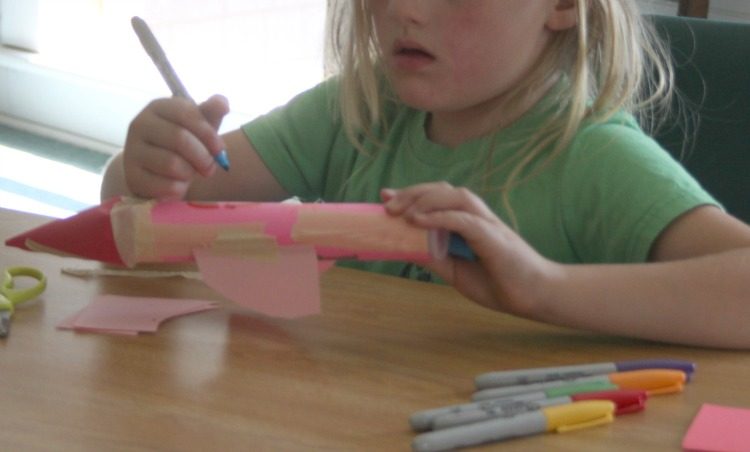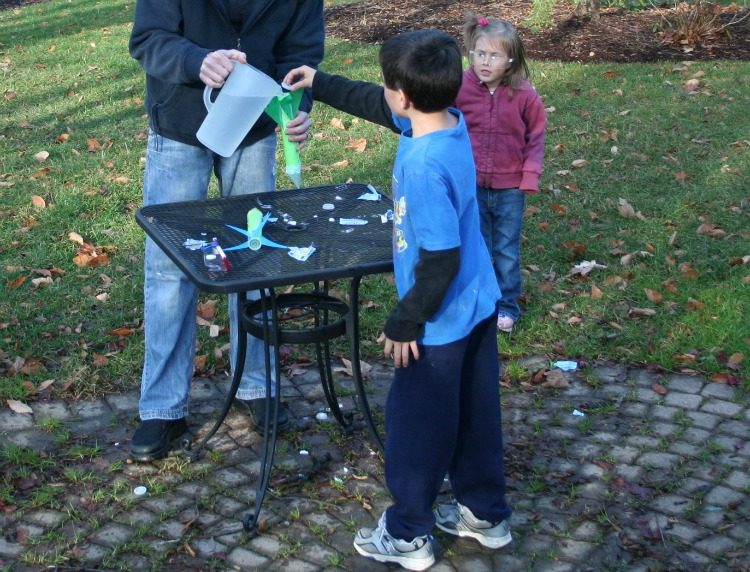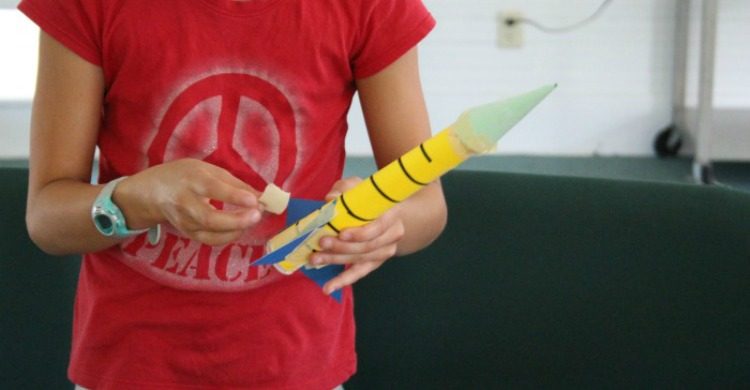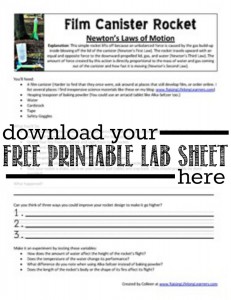Simple Science | Film Canister Rockets
Are you and your sciency kiddos looking for a fun way to learn about Newton’s Laws of Motion? Try making film canister rockets. My kids love making them, and I love that it’s a super-fun, easy way to teach the basics of Newton’s three laws of motion in one shot.
And, well, it’s just cool to shoot homemade rockets off outside.
I’ve done this activity with little ones in a co-op setting, with my kids and their friends, and again this past summer in a middle school science enrichment class for The Young Scholars Program at the Chautauqua Institution.
Are you ready to give it a try? You need a few things that should be easy to find around your house.
Film Canister Rockets
Materials
- Film Canister – This will probably be the toughest of all the materials to find now that everything is going digital, but ask at your local camera or drugstore. Most still get a few turned in here and there and are happy to give them to you for educational purposes. Otherwise you can purchase them through amazon inexpensively. We like to keep them on hand for pocket bug boxes, scavenger hunts, and other activities. (Note: If you’d rather not buy film canisters in bulk, you can use an empty M&M Mini tube. Just clip the hinge that connects the lid to the tube, and it’s just like a film canister.)
- Baking powder or Alka-seltzer tablets
- Card stock
- Tape
- Scissors
- Water
- Safety goggles
Instructions
- Tape a piece of cardstock to the edge of the film canister and roll it to make the body of the rocket. Then secure it along the entire side with tape.
- Make sure that the open end of the film canisrer is facing out.
- Leave a few millimeters of film canister showing so it is easy to get the lid on and off without the cardstock interfering.
- Make 3-4 fins out of cardstock and tape those to the bottom of the rocket body.
- Cut out a cone from the remaining cardstock and tape this to the top of the rocket.
- Hooray! You have made a rocket!
To launch the space craft, head outside to an open area, slip on your safety goggles, put a teaspoon of baking powder in the film canister, add some water, snap on the lid, give the rocket a little shake to get the reaction to start, then set it down and back up.
For a faster reaction, break up an Alka-Seltzer tablet and add that to the water before closing up the canister.
Let’s talk science now. How does this simple demonstration show all THREE of Newton’s laws?
Newton’s first law tells us that an object at rest stays at rest, and an object in motion stays in motion, unless something acts on it. This “unbalanced force” causes it to either move or stop moving {or change direction}. The unbalanced forced in this resting rocket is created when the gas builds up inside and pushes the lid of the film canister off.
Newton’s third law tells us that for every action {or force} there is an equal and opposite reaction. The force of the canister lid being pushed downward, causes the equal and opposite force of the rocket being pushed upward.
Newton’s second law tells us that the acceleration of an object is directly related to the magnitude and direction of the force and the mass of the object. In this case, the acceleration of the rocket is proportional to the force and speed of the water and gas being expelled from the canister.
If you’re ready to try this in your homeschool, feel free to use the FREE printable I created for my co-op kids. There are several questions for your kids to answer and some suggestions for how to turn this demonstration into an experiment. Simply click on the thumbnail below:
Do you like easy science activities like this? Share your results with me on Twitter or Facebook. I’d love to hear how your kids enjoyed the activities.
Enjoy your week – and have fun with your kids.







